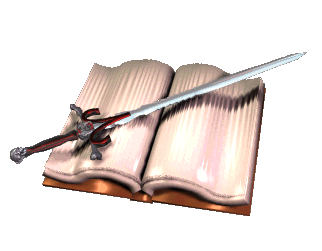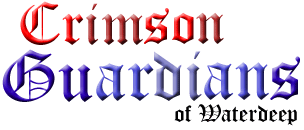Lawful Good
These characters believe that laws
must be created and obeyed to ensure the development of a strong society.
They will always seek to carry out actions which benefit the most people
or cause the least harm... even if such a choice is at their own expense.
(such as Paladins)
Neutral Good
The balance of universal forces
are important, but the concerns of law and chaos do not outweigh the need
for good. Fostering good shall always be the most important aspect, even
if it means overthrowing an existing social order to do it. (a baron ignoring
his king's orders in order to fight a perceived evil, even if such action
is to the king's detriment)
Chaotic Good
Strong individualists marked by
a streak of benevolence. Avid believers in the virtues of goodness and
right, with no use for the laws and regulations of society. Their actions
are steered by their own moral compass toward goodly tendencies. (a ranger
in the wilds living by the law of the land, survival) |
Lawful Neutral
Order and regimented law are of
greatest importance. The benefits of organization and rigid military regimentation
formed outweigh any moral questions raised by their actions. Structure
and adherence to precision are everything, good and evil are mere annoyances.
(an Inquisitor putting a perceived threat to the rack to get a confession)
True Neutral
Believe in the complete balance
of all things, and will avoid directly allying with or against evil, good,
law, or chaos. When compelled to act or choose, they will side with the
underdog in all given situations to ensure that the continued struggle
between those forces continue equitably. (a true druid)
Chaotic Neutral
There is no order or structure
to anything in their lives and they are free to follow whatever whim strikes
them at a given moment. They are highly unreliable, unpredictable, disorganized,
and dangerous. (an insane person, a gambler, a jester) |
Lawful Evil
Structure and organization are
used to elevate those who deserve to rule and benefit (especially at the
expense of others). Laws and rules are supported to the extent that their
own concerns are protected and met, first. (a merchant, a guild master,
politician)
Neutral Evil
Only interested in getting ahead.
Allegiances are based upon money and power, which makes them highly susceptible
and receptive to bribery. Unscrupulous behaviour is an acceptable means
to achieve power and what you want. (an assassin for hire)
Chaotic Evil
The bane of all that is good and
organized. Laws are believed to be the tools of the weak. You must take
what you want and exploit those weaker than yourself. They will not cooperate
with others well and oft must be bullied by a leader perceived stronger
than they to be motivated. (a raider, a viking) |



